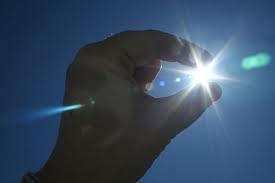
Features
Alternative Fuels
Energy
Virtual power plant explores renewable power coordination
April 4, 2013 By Brandi Cowen
 Linking solar power plants with other renewable power suppliers can ensure a consistent power supply on days when the sun doesn't shine. (Courtesy of IndianaPublicMedia.org.)
Linking solar power plants with other renewable power suppliers can ensure a consistent power supply on days when the sun doesn't shine. (Courtesy of IndianaPublicMedia.org.) A new research project shows it’s possible to provide power using renewable energies without increased risk of a blackout.
Researchers at the Fraunhofer Institute for Wind Energy and Energy System Technology (IWES) in Kassel, Germany, along with colleagues from Siemens Group, developed a software platform in support of the German government’s E-Energy Initiative, in which many small power plant operators act together as a virtual power plant. The conglomerate of smaller power plants shows that it is technologically possible to let each individual producer feed their electricity into the grid and have the grid remain stable during the process.
“Each source of energy – be it wind, sun or biogas – has its strengths and weaknesses. If we manage to skillfully combine the different characteristics of the regenerative energies, we can ensure the power supply for Germany,” predicted Dr. Kurt Rohrig, deputy director of IWES.
Since January 2011, the team has trialed a power plant that linked together via the Internet 25 plants with a nominal power output of 120 megawatts with a pumped storage power plant and electric vehicles. A central control ensures that the disadvantages of renewable energies – including days when the sun doesn’t shine and the wind doesn’t blow – are reduced. The control room takes on two simultaneous roles: functioning as the power plant facility manager monitoring the facilities that make up the virtual power plant, and acting as the pool coordinator marketing the energy that is produced.
Surplus power can be stored or turned into thermal energy.
The newest Combined Power Plant 2 project is upgrading that software to offer expanded grid stabilization functions.
Scientists are now modeling what the power supply system of the future will look like and how the individual facilities might be distributed. They will also determine the requirements for ancillary services, such as frequency and voltage stabilization, black start capability and inertia reserve, so that the renewable electricity will reach the consumer in a stable way.
“With the Combined Power Plant 2, we are able to show what changes are in store for our power supply. And we demonstrate how the renewables master this task and how they can ensure the stable supply of electricity in the future, as well,” said Kaspar Knorr, project manager of the Combined Power Plant 2 project at IWES.
Print this page